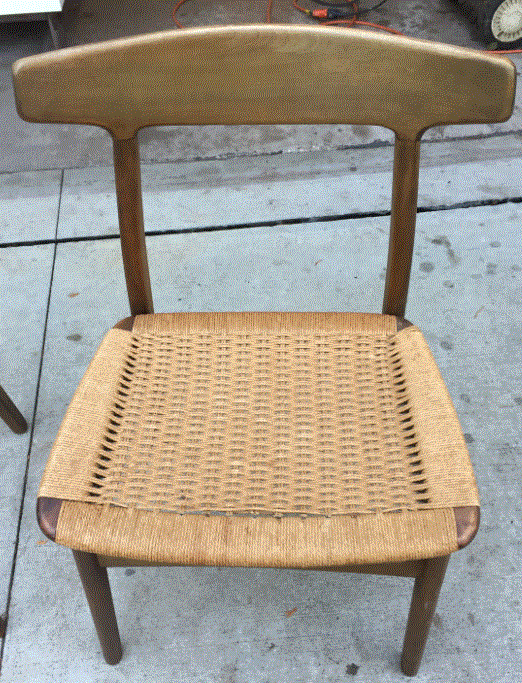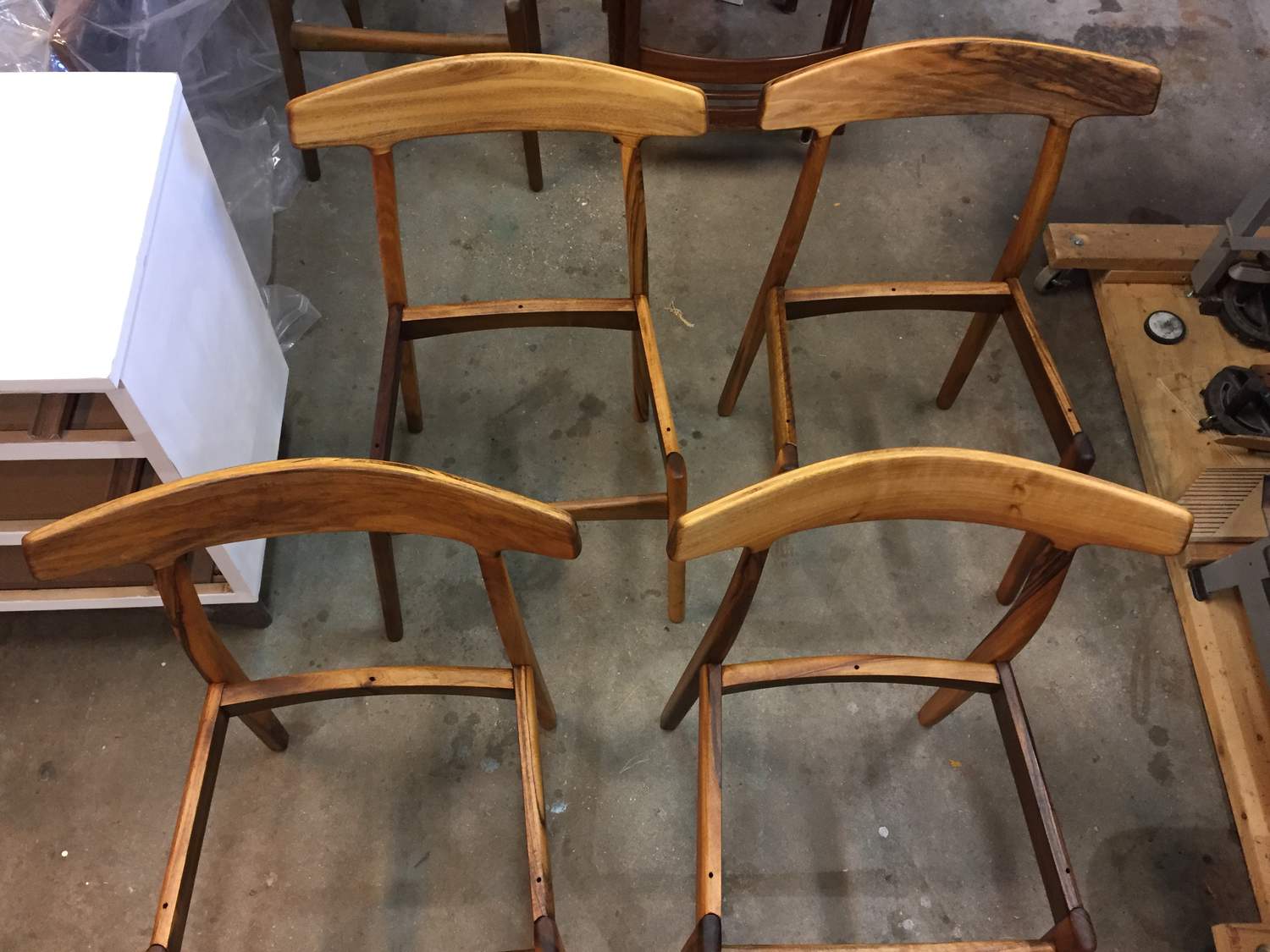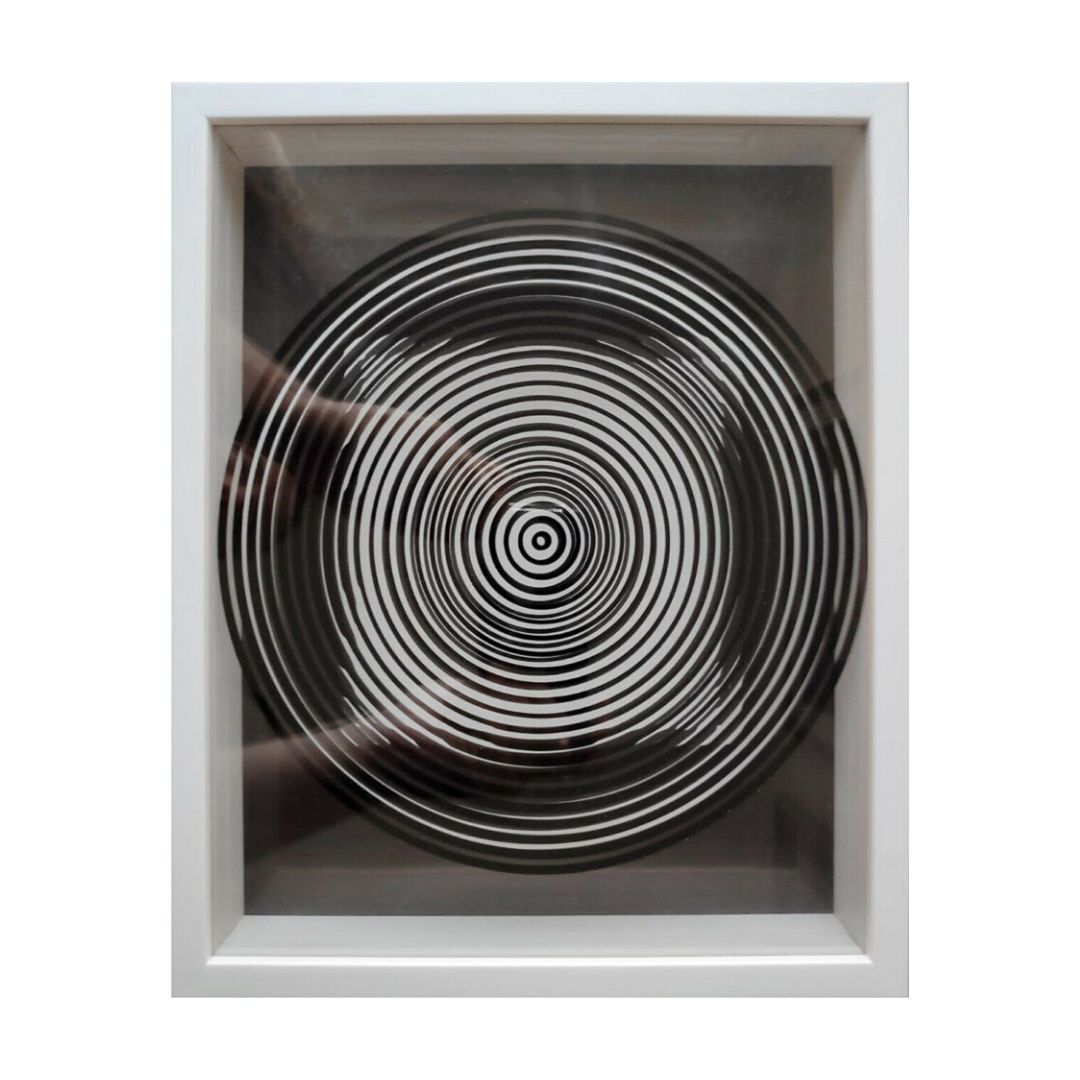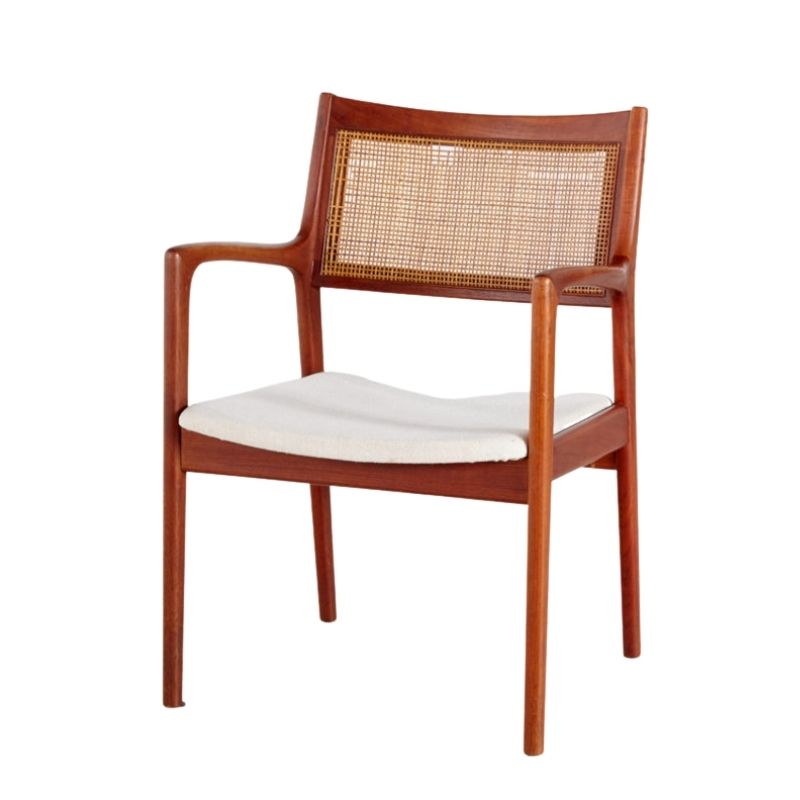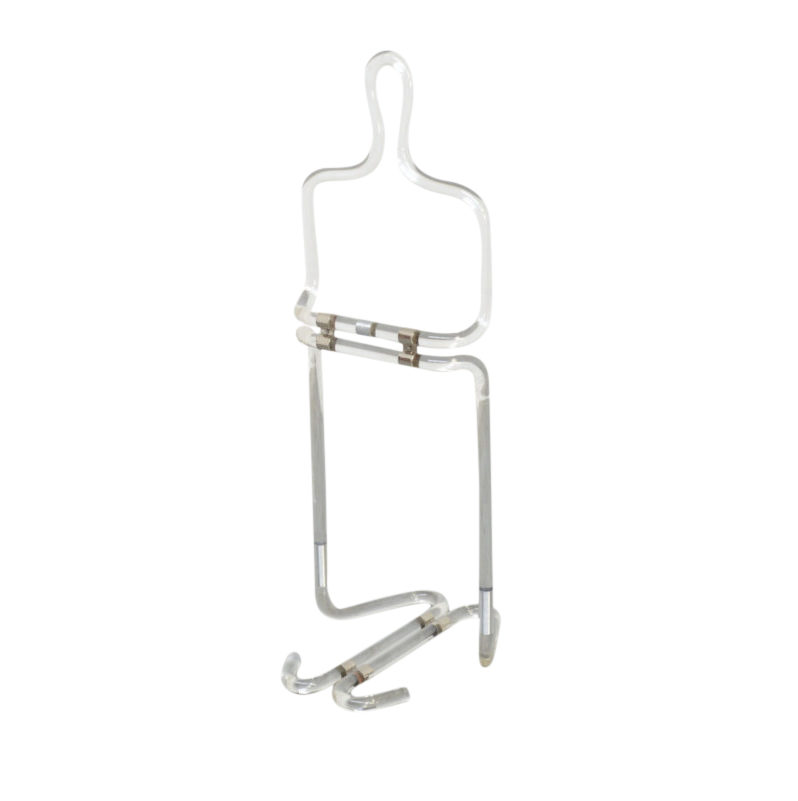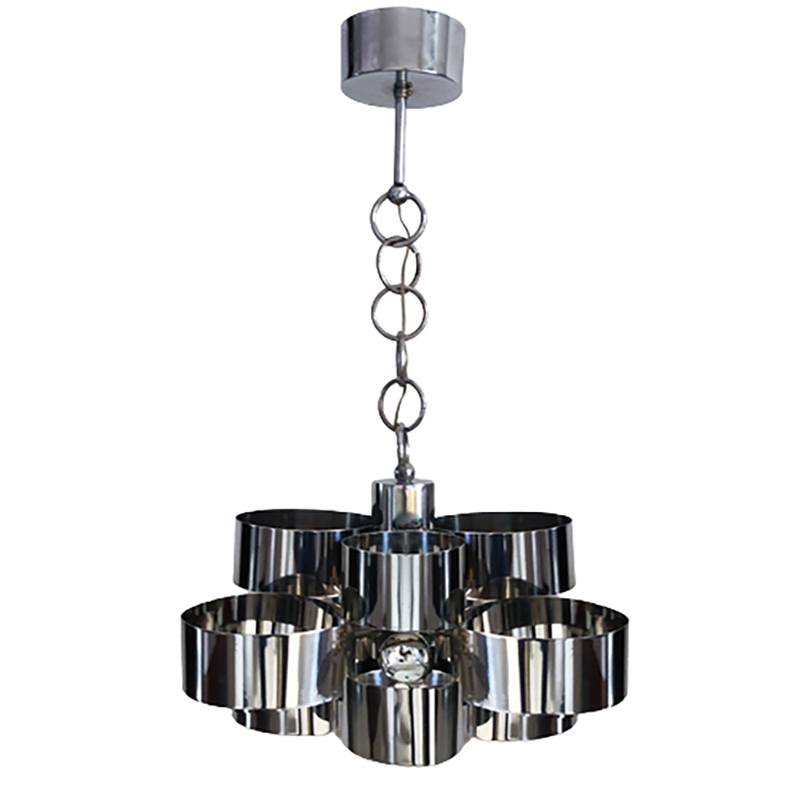Henning Kjærnulf chairs by Bruno Hansen. Been eyeing these for a while, as I really wanted to take a shot at refinishing them, and I finally picked them up. 2 Model 225, and 4 of the Model 60 variants.
I have been perplexed about the wood ID, as the chairs have a strange muted color, that is almost a gray-green. The color had me thinking teak, but the pores and subtle grain characteristics were not those of teak.
Anyways, I got them home this weekend and started taking the paper cord off, and took the sand paper to one of the backs (the finish on these is just too gross to leave as is). Once past the surface finish, dark veining started to appear,. This visual mixed with the sweet smell of of the wood dust, gave me mixed emotions. It was clear that I was not dealing with teak, as I was expecting.
The mixed emotion arose, of course, because these chairs are rosewood. I was a little disappointed because the refinishing activities had clearly become a bit more complex and higher stakes, but delighted at the same time because the chairs now had the greater beauty potential of Rosewood.
What is a little perplexing is how light the rosewood is? I understand that Rosewood lightens due to UV exposure, but these chairs seem to be evenly bleached everywhere. I sanded on the back for a fair amount of time (note, I have done hundreds of hours of sanding, so I was very aware of how much material was removed and to do so very carefully and evenly), and the characteristic dark streaking really came out, but never really got to any red color in the general wood?
In any case, I have taken off as much material as I am comfortable taking on this one chair, so I will probably start stripping and sanding the remainder of the chairs. A few of the joints are loose, so I will steam and disassemble everything, re-glue, and refinish. Disassembly will be necessary for the Model 225s in any case, if I want to get a evenly sanded chair (most of the joints and angles are just too irregular to sand assembled). Planning on multiple oil applications.
I have a pretty good idea of what I am going to do, and how I am going to do it, but I figured I would start a post, to take suggestions, and just generally document a Rosewood chair refinish. Here are some pictures, and I will add more as I go.... <img class="wpforo-default-image
<img class="wpforo-default-image
Thanks DH.
I started sanding last night for a few hours, and you might be right about the walnut on the Model 225 chairs. I have to say, this has been one of the more perplexing wood ID cases for me. I am usually pretty decent at wood ID, but whatever treatments have been applied (or not applied) over the years has really obscured what these are. I also did not even think about walnut, because it was not very common for early Danish cabinetmakers to use Walnut, and I have mainly only seen these chairs in Rosewood.
I worked on the rail of the Model 225, and I can see the grain now, which does look a bit like walnut, although much lighter than what I am used to working with.
I mainly worked on the Model 60 variants though, and would agree that they are most likely not Rosewood as I originally thought (which I am actually happy about, since if they were, it would be seriously bleached and difficult to refinish correctly). If it is walnut, it would appear to be very figured and color-streaked. I did see some medullary rays, which would be consistent with Walnut.
In any case, Walnut is probably my favorite furniture wood (very close with Teak and Rosewood), so I am not at all disappointed. The color variation and figuring are looking pretty amazing at this point, there is little doubt that they will be beautiful. Also, I have the most experience finishing Walnut, so that is positive.
Edit: Picture below - stripped/sanded with mineral spirits on left, untouched on the right.
My first thought was walnut too, but I'm not that great with wood ID and it also didn't fit with the Danish origins, so i kept my mouth shut! I think it was the thing about it being greenish that triggered the ID for me, though. I've seen a lot of old walnut with green undertones. I don't know if it's a reaction to light over time, or what--but it seems to be a thing.
For what it's worth, I once saw a set of Møller chairs (can't remember the model) that were made of a very active grained walnut and the seat were woven of thin, smooth, narrow strips of leather! I gasped when I saw them. I wish I had had a camera with me. I was picking up a rosewood set from a guy in upstate NY and he showed me the walnut set which he was thinking of keeping for himself. They were stunning.
Walnut has a very distinctive (and to me unpleasant) smell when being cut. You should be able to positively identify it by smell regardless of oddities of grain or color. And some walnut can have very unusual grain. The sheer weight of the chair should be a decent indicator of rosewood vs walnut; walnut feels about as heavy as I expect, rosewood feels notably heavier.
Early Danish modern furniture, as in up to about 1953 or 1954 did use plenty of walnut. There was not a lot of teak used. This was due to the fact that teak could only be worked a very low cabinetmaker-like volume of production. Teak required the realization that recently invented tooling from the field of cutting aluminum could also be used to cut teak. The resins and oils in the teak gummed up the saw blades, and the silica dulled the teeth, resulting in constant churning of saw blades when cutting teak.
If you look at catalogs from the early 1950s, it is notable that the wood choices are generally walnut, oak, or beech, often in combination. Stained beech was commonly used as a less expensive alternative. Ocassionaly you will see something like a teak armrest. Teak had become more common in the highest end cabinetmaker pieces by that time.
I need to write a post about the evolution of wood use in Danish modern furniture. It is an interesting story featuring Finn Juhl, and Charles France.
The smell of walnut is somewhat similar to the smell of poplar. Although that may not help much. If you have a chunk of walnut and a drill laying around, drilling a hole in it will give you the smell. I made a Danish modern Christmas tree a few years ago out of strips of walnut. My wife commented on how nice the smell of it was running it through the saw. I was trying not to ignore it.
It has been years and years since I was near a walnut husk or leaf, so I just don't remember.....
I have walnut trees (American aka 'Black' Walnut - Juglans nigra) in my back yard, and it is probably the one wood I work with the most. The wood does have a very distinctive smell when being worked. Spanky, it is not like the smell of the nut-husks, though. That is a very different, pungent, smell. It is really hard to describe the smell of the wood, and also seems to have some dependency on where the tree grew (soil types, and minerals, water content, etc.).
The smell of these chairs, when I started sanding them, was nothing like the North American Walnut I am used to working with (supposed it could have been the finish too). These chairs smelled far sweeter, more like a number of tropical hardwoods I have worked with before. Which is why, along with the color variation, I bought into Rosewood so easily. I suspect the walnut used in these chairs, is of the European variety (Juglans regra), though. The European Walnut is much lighter, and has much less color stability, so that perfectly explains what I am seeing.
I guess I was just so used to working with Black Walnut, that I did not even think Walnut on these. Also, most of these chairs that you see out there have Rosewood attributions (but I would bet a good number of them are actually walnut!).
Leif, I would be really interested in the Danish wood-use evolution!
zephyr, have you looked at the photos of walnut on the hobbithouse site? He lists about 20 different varieties, though I'm sure that not all of those would have been used for early Danish furniture.
http://www.hobbithouseinc.com/personal/woodpics/#letterW
Well I am felling pretty confident on the European Walnut now after sanding and a first coat of oil. The originals were toned, presumably to even out the coloring. The color variation on these is pretty wild. At first I was a little taken a back, but after I have the first coat of oil on them, I really like the variation and color streaking. They are busy, but just stunning up close. Need to take a rest for the remainder of the weekend, but back at the Model 225s in a couple days....
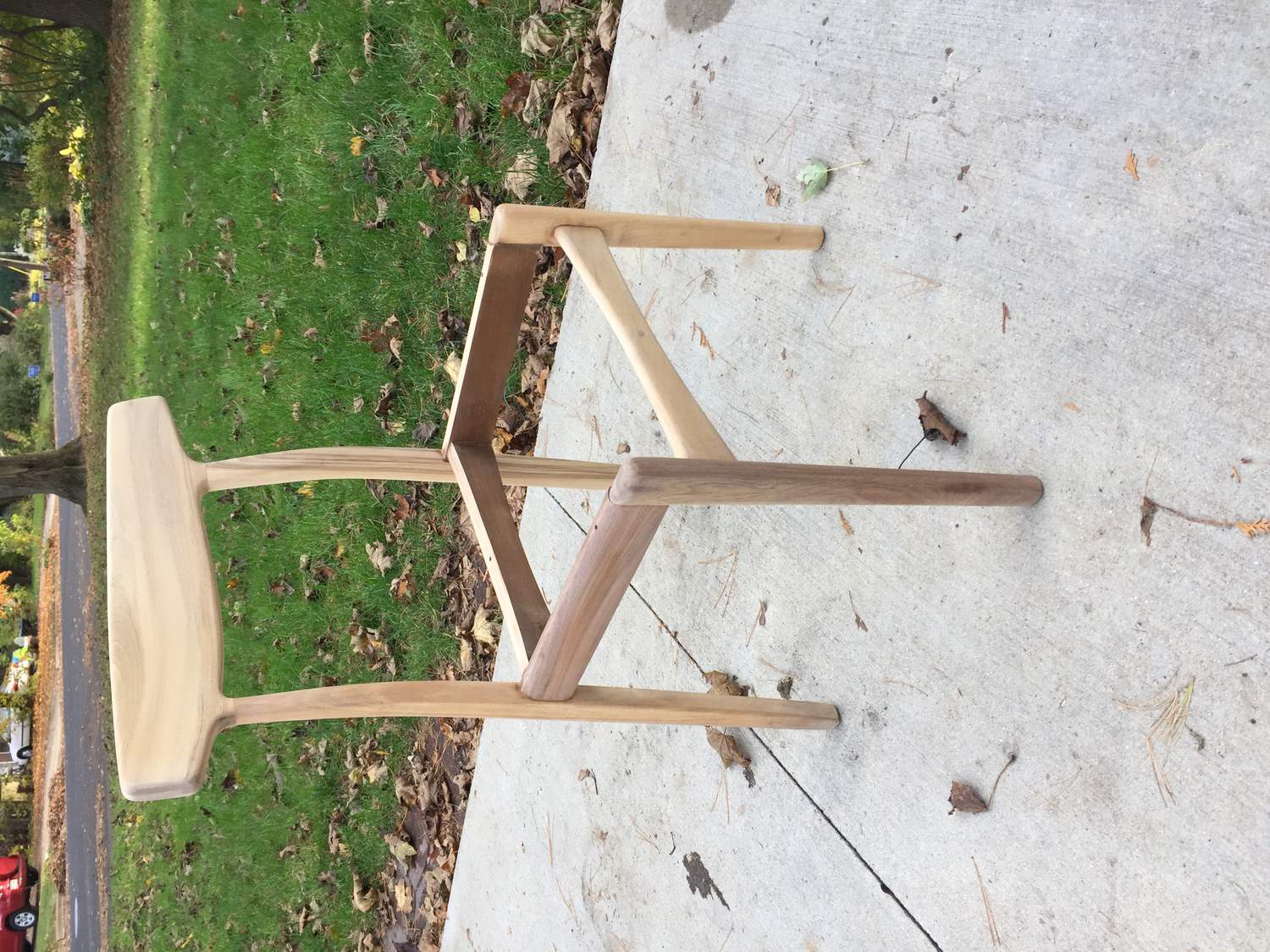
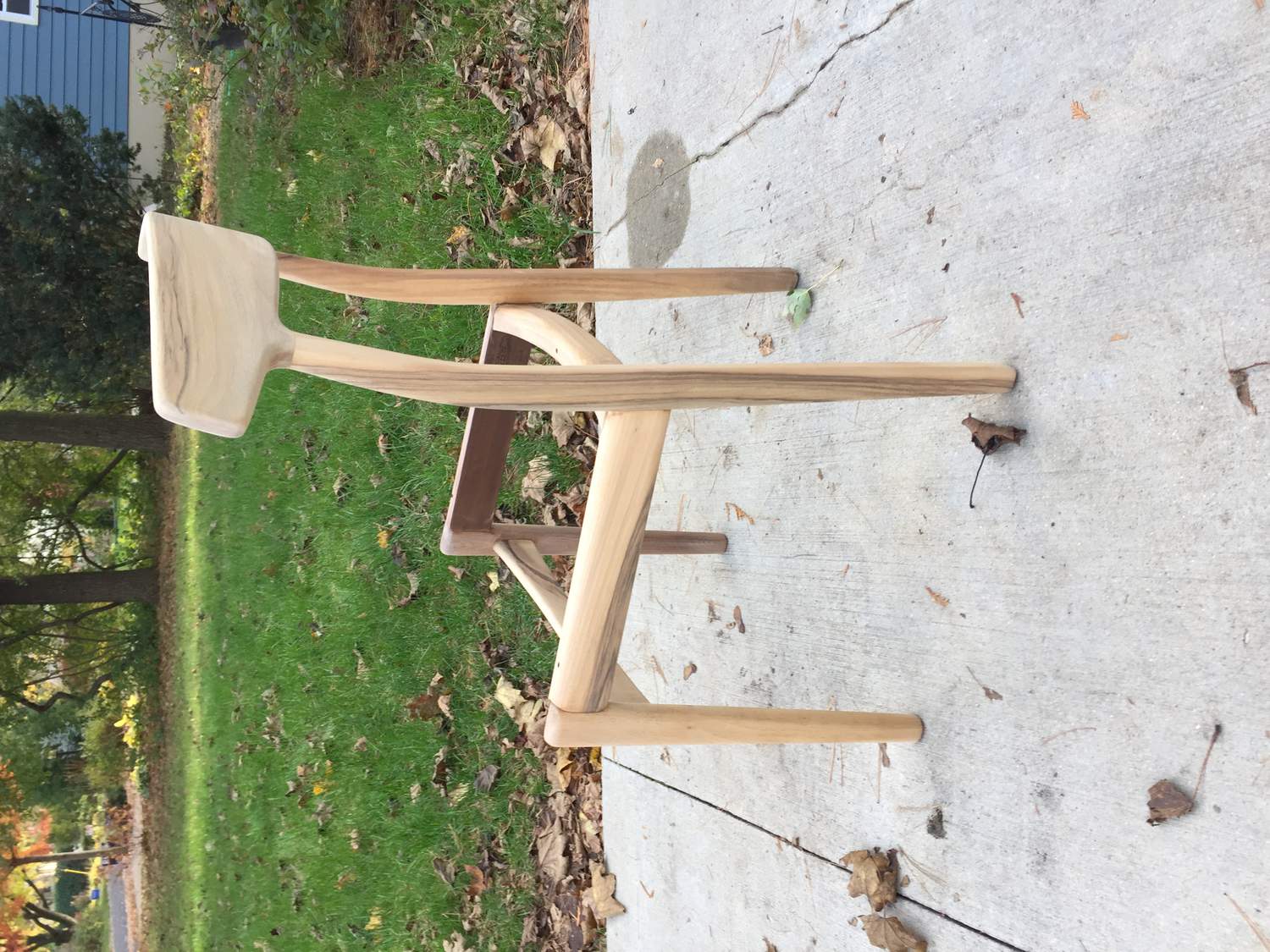
Zephyr, just wondering if you had a final identification of the wood on your Bruno Hansen model 60 chairs? I just inherited a complete dining set from my dad (Model 60 chairs) and in the process of refinishing the chairs. Stripped and sanded they look just like the ones you worked on. I have applied teak oil to mine and the variation in color between chairs and parts of each chair is amazing. Others have told me teak, but I am not so sure.
If you need any help, please contact us at – info@designaddict.com


